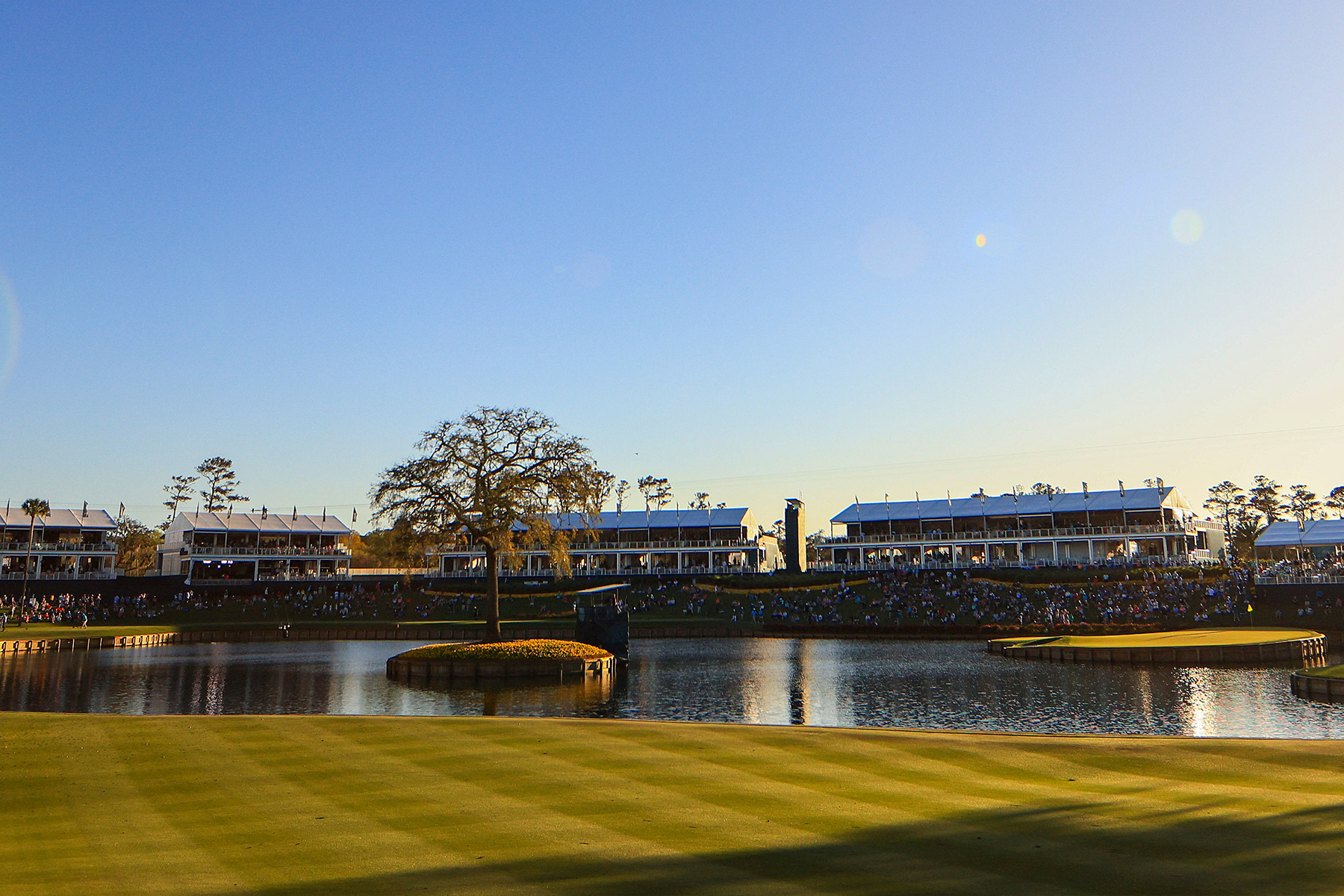quick coaching
You Can "Turn" Your Nervous Energy into Positive Results When Attacking Holes like No. 17 at TPC Sawgrass
By Keith Stewart, PGA
Published on

A general view of the 16th fairway and 17th hole during the first round of THE PLAYERS Championship on THE PLAYERS Stadium Course at TPC Sawgrass on March 11, 2021 in Ponte Vedra Beach, Florida. Photo by Mike Ehrmann/Getty Images
Kyle Stanley was the first player to reach No. 17 at The PLAYERS This week. First challenger and first victim. In fact, 35 balls entered the water on 17 in the first round. If PGA Tour players cannot hit the famous island green on the TPC Stadium course, how can mere mortals be expected to do it?
It’s a very natural thing and no matter how many times you have played the hole, having there be such a penalty for a slightly misplayed shot will make physical changes to your swing. Start by taking one extra club and gripping down from the end by about a half-inch. We want to ensure the best contact possible. This setup strategy will help. The longer club will also create a more penetrating ball flight. Should there be any wind, this is a must for sure.
Maximum turning in the dynamic motion of the swing will now be our number one priority. Our first move away from the ball should be with our trunk, not our hands and wrists. Load the center of your body by turning your back toward the target. Following this blueprint will certainly shorten your backswing. Once you reach the transition point, begin turning forward with your trunk again. Leave those hands and wrists alone.
Continue turning past impact and through to your lead side. (The side closer to the target.) Your weight should feel firmly planted on that lead foot and your trail shoulder should finish closer to the target than your lead shoulder. Self-doubt and inner demons can attack our swing at any moment. It is imperative you learn to understand YOUR turn.
Try this at home, take your stance against a wall, you can be inside or outside. You just need to give yourself enough room to swing from halfway back to halfway through. With your backside against the wall, start your takeaway. Continue until your trail “cheek” is the only thing against the wall and the backswing is approximately hip high or a little longer. The club should not be touching the wall at this point.
Now turn through past impact, feeling the backside transition toward the lead cheek. At no point during the through swing should you come off that wall!
Finish with your lead cheek against the wall and your hands outstretched against it; the hands will get there before the clubhead. Practice this movement and you will learn what turning really feels like in the golf swing. Bring this feeling to that challenging target hole with a little extra club and your rate of success will surely increase.
